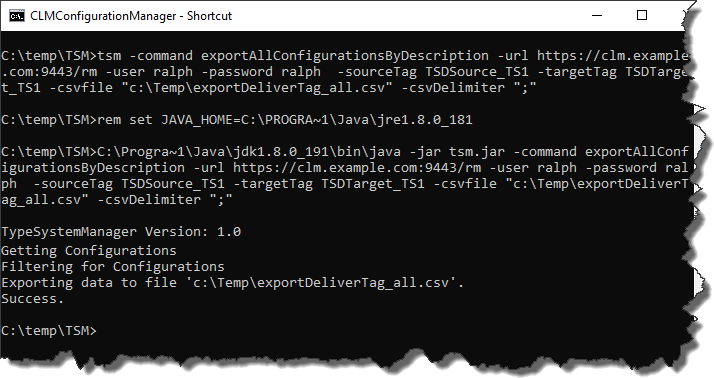It has taken some time since I published Maintaining the Rational DOORS Next Generation type system in a configuration-management-enabled environment. Part 1: Manual procedures which is about this Jazz.net article.
I was very excited about it, because I was contributing to the effort myself. We finally have made progress and just released the next part. You can now read the article about Maintaining the Rational DOORS Next Generation type system in a configuration-management-enabled environment. Part 2: Automation.
So, what is that all about?
Type System Manager
I did some prototyping, and we experimented with different possible approaches for this automation. What we came up with is explained in the article above.
In summary, I created a prototype, lets name it Type System Manager (TSM), that can be used to automate the type system management, supporting the best practices identified in Part 1.

The prototype uses available public Doors Next Generation OSLC/REST API’s to perform the necessary tasks.
So I have been lucky to be able to do some prototyping and learn a lot about OSLC and REST API’s. The result is a prototype, that has a useful application, and is also a demonstrator for how to create automation using OSLC and REST API’s.
Usage of OSLC and REST API’s has been missing on this blog and this prepares the foundation for hopefully more examples, here in this blog, in the future.
Disclaimer and Download
I should not have to write this, but as this is the internet 8), so here goes: Any code downloadable or accessible in this post is provided as is, without support, and used at your own risk.
The code was developed in Java using Eclipse and is based on the Eclipse Lyo Client.
Thanks to IBM approving, the code was published as open source, under
Eclipse Public License – v 1.0, in the incredible (mostly German speaking) Jazz Community and can be found here.
What is next?
The second part explains how the TSM prototype can be used and what it does and how. The next part is currently under review and will explain the details of the code, how it works, how to re-use and add to it. It also explains how to download and work with the code.
Related
- Type System Manager Part 1
- Type System Manager Part 2
- Maintaining the Rational DOORS Next Generation type system in a configuration-management-enabled environment. Part 1: Manual procedures
- Maintaining the Rational DOORS Next Generation type system in a configuration-management-enabled environment. Part 2: Automation
- Maintaining the Rational DOORS Next Generation type system in a configuration-management-enabled environment. Part 3: Automation tool deep dive
Feedback?
As mentioned in the article Comments, feedback, ideas, and experiences are greatly appreciated.
If you have questions, ask them in the Jazz.net forum instead of commenting on the article or this blog post. Tag the question as a Rational DOORS Next Generation question and add the tag: dng-type-system-management to mark it for the reader.
Summary
As always I hope that the artifacts created for this blog will useful for the Jazz user community out there. Feedback, also usage, is greatly appreciated.
